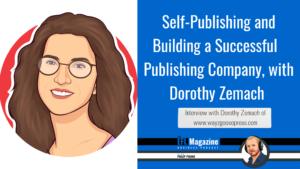How To Choose An ELT Textbook
So you need to choose a new textbook for your class? It’s no secret that the market is full of shiny, colourful, attractive-looking books; but which one is right for you and your learners?
Several practitioners have suggested frameworks for making decisions like this, which include more or less specific questions, and tables or matrices to award points within a textbook evaluation. See, for example, summaries and suggestions in a blog post by Adam Simpson (2014) here, or an article by Mukundan, Reza Hajimohammad and Nimehchisalem (2011), which can be found here. If you’d like to know more about how to design an evaluation checklist, there’s a useful video by ‘ustukalsinhayatin’, available here.
The aim of this article is not to provide yet another tabular evaluation form, but to demonstrate some ways in which the input to inform your opinions and evaluations can be gathered.
Before looking for potential textbooks and collecting inspection copies, whoever is going to be involved in choosing a textbook should be clear on:
- What level are the learners at (realistically) and what level do we want to get them to?
- How long is the course? How much time do we have to work with the textbook?
- Will we want to supplement a textbook with our own materials? Or use supplementary materials that go with the book?
- What is the focus of the course? What skills should be trained? What language should be introduced/practised?
- Will the textbook only be used in class? Or also for homework tasks?
Once the above points have been clarified, you can go on the hunt for potential textbooks. Most publishers offer complimentary inspection copies to teachers, you can often order these online or by contacting the local representative of the publisher in your area. Try to collect a handful of textbooks to choose from. When making the actual decision, ask yourself:
- How much do the students’ books cost? Is it reasonable to expect the learners/school to pay this much?
- Do the exercises and language really suit the level the learners are working at?
- Does the book’s approach to ELT match the teaching methodology preferred by the teachers involved in the course? And the philosophy of the school?
- Do the activities and methodology suit the learning styles and expectations of the learners?
- How do the topics covered relate to the learners’ needs and interests? And to the teacher’s interests?
Probably after considering all the questions above you’ll have a couple of textbooks which make the ‘final round’ of decision making. This would be the point to employ one of the evaluation matrices or checklists as mentioned above. If possible, now would be a good time to try out the books. Of course, it’s rarely possible to try out the books with the actual learners they are intended for, but here are some other practical ideas:
-
- Test one unit with a similar class: You can photocopy a couple of pages, or make a worksheet or OHT with some of the book’s information and exercises, and use them in a similar class. Then you can judge whether the level and methodology suits the kind of learners you have at your institution, and your teaching style.
- Ask similar students to review the books: Perhaps the learners who have previously taken the class you are planning for, or at least learners who are working at a similar level. Ask them to try out a unit or two by themselves and to do a quick review – perhaps you can provide a little questionnaire (e.g. using www.surveymonkey.com) to focus on the points you’re interested in – to see how well the book comes across, from a learners’ perspective.
- Work through a chapter: Take the learner’s role and read through a unit or two, doing all of the exercises. You can then see whether the activities, for example, are clearly set up, or repetitive, and whether any answers given match what you would expect students to produce.
- Read other reviews: A standard search engine will probably help here, or book sellers, blogs, etc. See what other people are saying about the textbook – but (if possible) focus on reviews written by those working/learning in a similar setting to your own. You could try generic sites like www.amazon.com or the materials reviews sections of relevant teaching magazines. For example, check out Modern English Teacher or Martin Sketchley’s blog.
At some point, you’ll have to bite the bullet and make a choice. Following the guide above will, I hope, help to guarantee your decision(s) are good ones and the textbooks chosen are appropriate and work well in the class you’re planning. You might also find it helpful to elicit feedback from your class during and after the course – then you’ll know for next time where you went wrong, if at all. Indeed, the considerations I’ve are described above are what Ellis (1997) would term ‘pre-use evaluations’, and he notes that ‘in-use’ and ‘post-use evaluations’ are equally important, so don’t forget them!
One thing I have learned from working with various textbooks – it is almost impossible to find one that perfectly fits your class on all levels. But do not despair – you can always supplement it with your own materials. Rory O’Kane has looked into this in an article for EFL Magazine which can be read here. And passing on your feedback to the publisher can also help to improve what’s on offer when you have to choose new textbooks in future!
If you have recently gone through the process of choosing a new textbook, or if you are about to embark on the textbook-choosing journey, use the comments box below to share your tips or pose questions other readers can help you with!





One Response
Eric the sceptic
Thank you for sharing this timeless article. Choosing an appropriate EFL textbook remains more difficult than many teachers realize. You've provided a thoughtful, reflective method and many suggestions on how to intelligently make informed choice of textbooks. I've presented on this topic a few times at English teacher conferences. It's easy to overlook two crucial factors: availability of a textbook (censorship, cost, distribution) and limited time. While it would be wonderful to have time to carefully evaluate a very wide range of books, get student feedback on possible choices, and systematically review options with colleagues, I've seldom worked under such ideal conditions. Sometimes the textbook choice must be done rather quickly and based on only a few known, familiar choices. In these situations, forget perfection; I just want a strong textbook that I can supplement with additional materials. Many EFL teachers, I would suggest, expect too much from textbooks. Sometimes relying less on scaffolded lessons also opens up more authentic learning moments in our classes.
19/09/2017